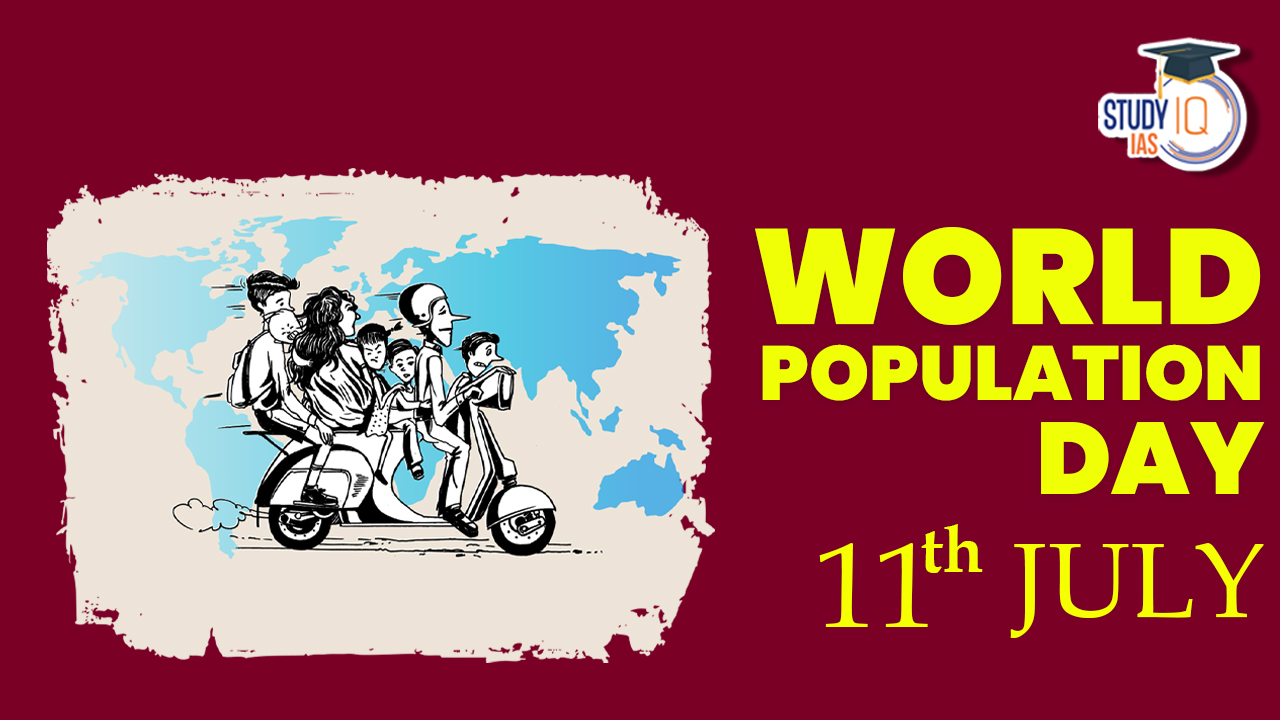Table of Contents
World Population Day 2025
World Population Day 2025, observed on July 11, focuses on the theme “Empowering young people to create the families they want in a fair and hopeful world.” This global observance raises awareness about critical population issues such as reproductive health, gender equality, youth empowerment, and sustainable development. Established by the UNDP in 1989 and inspired by the “Day of Five Billion” in 1987, the day encourages governments and societies to ensure access to healthcare, education, and family planning. The global population surpassing 8.2 billion highlights the need for informed choices and inclusive policies to shape a balanced future.
World Population Day 2025 Theme
The theme of World Population Day 2025 is “Empowering young people to create the families they want in a fair and hopeful world.” This theme emphasizes the importance of youth empowerment, reproductive rights, and gender equality in shaping future societies. It calls on governments and institutions to provide young people with access to quality education, reproductive healthcare, family planning services, and economic opportunities. By enabling youth to make informed decisions about marriage, parenthood, and their futures, the theme envisions a world where population growth is balanced with fairness, hope, and sustainability, fostering inclusive development and long-term global well-being.
10 Most Populated Countries in World
On World Population Day, we aim to raise awareness and understanding of global population issues, including demographic trends, growth projections, and their impact on sustainable development. Explore the most populous countries in the world as of 2025. Here are the top 10 most populated countries in the world, as of 2025:
| Rank | Country | 2025 Population | Growth Rate (2024–25) | % of World |
|---|---|---|---|---|
| 1 | India | 1,463,865,525 | +0.89% | 17.78% |
| 2 | China | 1,416,096,094 | −0.23% (population declining) | 17.20% |
| 3 | United States | 347,275,807 | +0.54% | 4.22% |
| 4 | Indonesia | 285,721,236 | +0.79% | 3.47% |
| 5 | Pakistan | 255,219,554 | +1.57% | 3.10% |
| 6 | Nigeria | 237,527,782 | +2.08% | 2.89% |
| 7 | Brazil | 212,812,405 | +0.38% | 2.59% |
| 8 | Bangladesh | 175,686,899 | +1.22% | 2.13% |
| 9 | Russia | 143,997,393 | −0.57% (declining) | 1.75% |
| 10 | Ethiopia | 135,472,051 | +2.58% | 1.65% |
India has only 38 years before its population starts shrinking: UN Report
- The UN World Population Prospects report forecasts India’s population to peak at 1.70 billion in 2062, signifying 38 years of growth until then.
- Currently holding the title of the world’s most populous country, India is projected to maintain this position by the century’s end.
- UN data suggests India’s population will reach its peak around July 2062. While the population is expected to grow by approximately 222,000 that year, a decline is projected to begin soon thereafter. Estimates indicate a population decrease of around 115,000 in 2063, with this decline accelerating in subsequent years. By 2065, the annual population loss is projected to reach 793,000.
History of World Population Day
World Population Day originated on July 11, 1987, when the global population reached an estimated five billion people, sparking worldwide attention and conversations about population growth. This day became known as the “Day of Five Billion.”
Following the momentum from the Day of Five Billion, the Governing Council of the United Nations Development Programme (UNDP) established World Population Day in 1989. The first World Population Day was celebrated in more than 90 countries in 1990. The UN states, “World Population Day, which seeks to focus attention on the urgency and importance of population issues, was established by the then-Governing Council of the United Nations Development Programme in 1989, an outgrowth of the interest generated by the Day of Five Billion, which was observed on 11 July 1987.”
By resolution 45/216 of December 1990, the United Nations General Assembly decided to continue observing World Population Day to enhance awareness of population issues, including their relations to the environment and development.
Significance of World Population Day
World Population Day holds significance for several reasons:
- Increasing Awareness: It provides a worldwide platform to highlight important concerns related to the growing population, including family planning, reproductive health, and demographic changes affecting sustainable development.
- Addressing Challenges and Opportunities: The day addresses issues such as poverty, resource scarcity, and environmental stress brought on by population growth. It also highlights the advantages of a larger population, such as innovation and a more diversified labor force.
- All-Inclusive Data Gathering: Ensuring accurate counts of all people in worldwide censuses has been a recent goal of World Population Day. Policymakers need this information to comprehend population requirements and develop long-term solutions.


 World Day for International Justice 2025...
World Day for International Justice 2025...
 Anusandhan National Research Foundation ...
Anusandhan National Research Foundation ...
 Places in News for UPSC 2025 for Prelims...
Places in News for UPSC 2025 for Prelims...





















